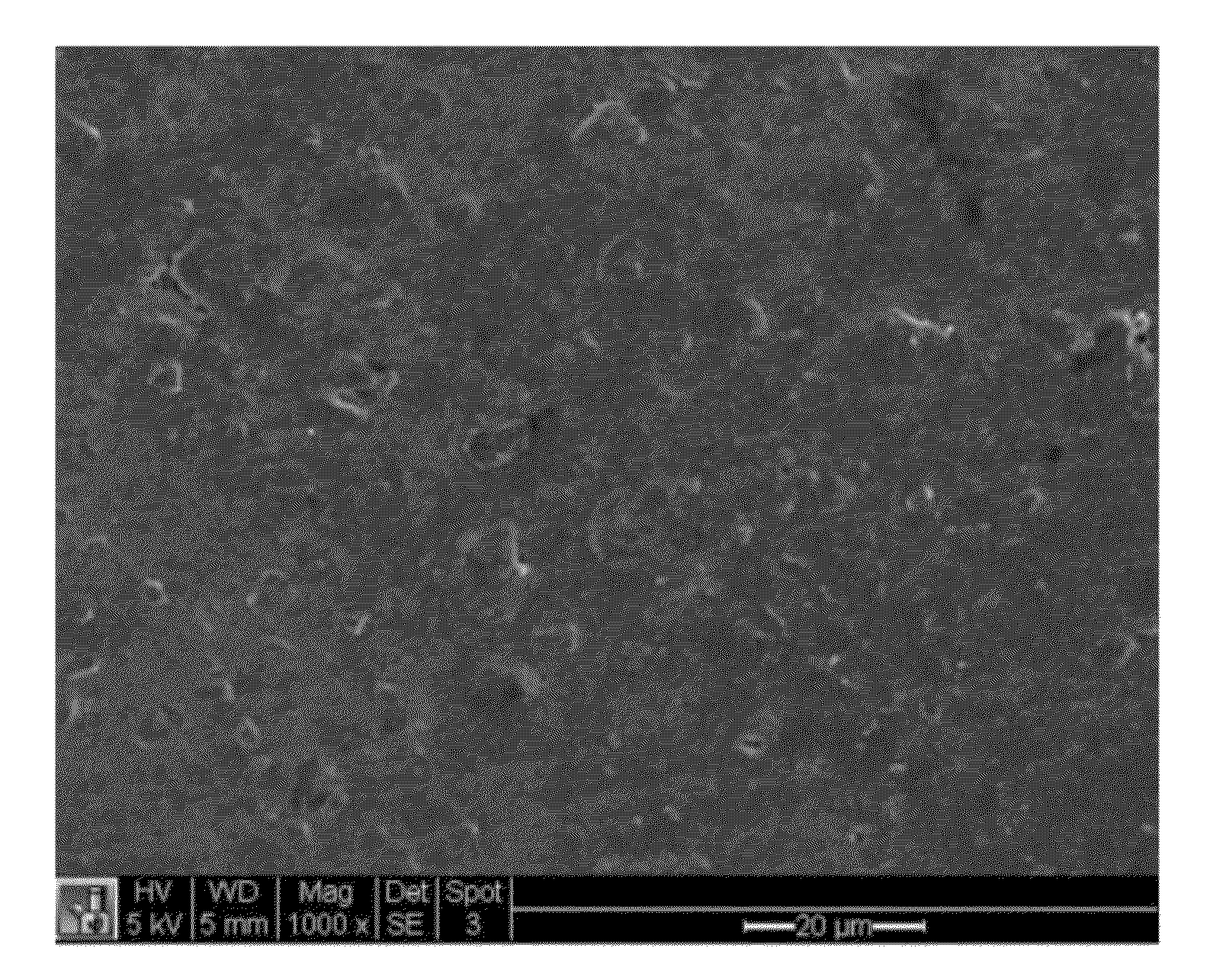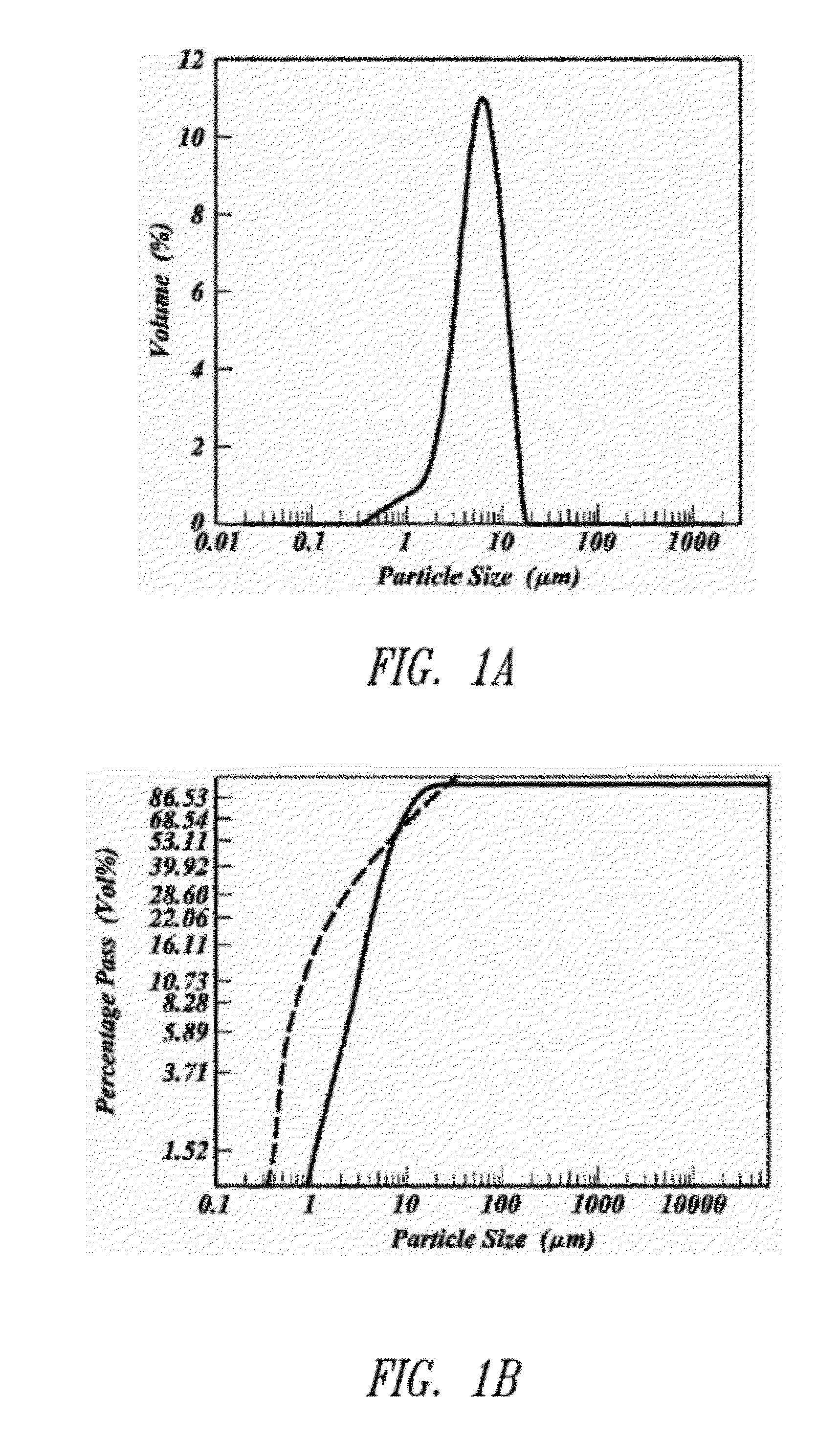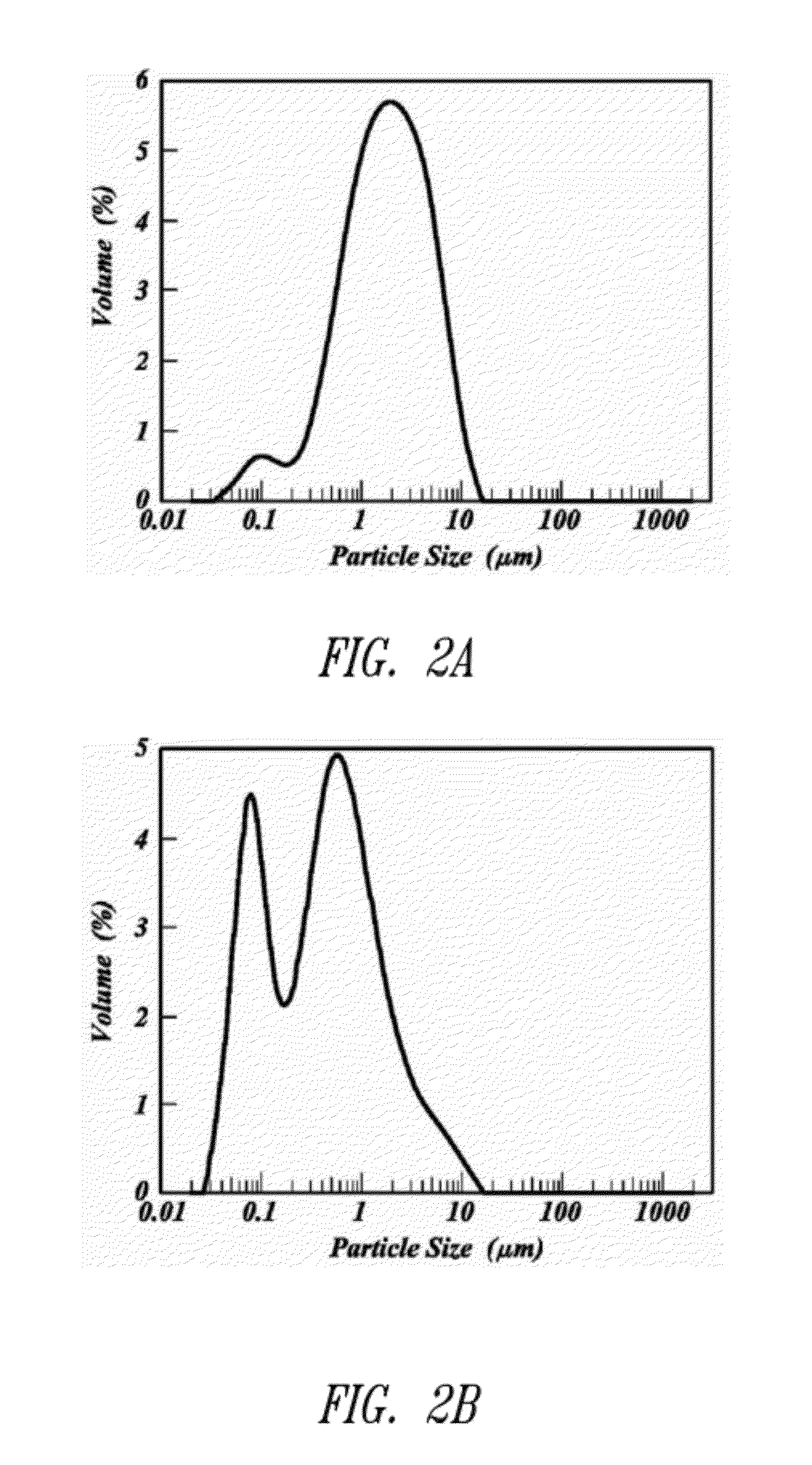Enhanced packing of energy storage particles
a technology of energy storage particles and energy storage particles, which is applied in the field of packaging of energy storage particles, can solve the problems of limited physical size of electrodes, insufficient current application of such methods, and inconvenient size of electrodes, and achieve the effect of improving volumetric performan
- Summary
- Abstract
- Description
- Claims
- Application Information
AI Technical Summary
Benefits of technology
Problems solved by technology
Method used
Image
Examples
example 1
Preparation of Polymer Gels
[0251]According to the methods disclosed herein, a polymer gel was prepared from a binary solvent system comprised of water and acetic acid (75:25), resorcinol, formaldehyde, and ammonium acetate. The material was then placed at elevated temperature to allow for gellation to create a polymer gel. Polymer gel particles were then created from the polymer gel and passed through a 4750 micron mesh sieve. The polymer gel particles were frozen by immersion in liquid nitrogen, loaded into a lyophilization tray at a loading of 3 to 7 g / in2 and lyophilized. The time to dry (as inferred from time for product to reach within 2° C. of shelf temperature) was related to the product loading on the lyophilizer shelf.
[0252]The surface area of the dried gel was examined by nitrogen surface analysis using a Micromeritics Surface Area and Porosity Analyzer (model TriStar II). The measured specific surface area using the BET approach was in the range of about 500 to 700 m2 / g.
example 2
[0253]Polymer gels prepared according to Example 1 were pyrolyzed via incubation at 900° C. in a nitrogen atmosphere for a dwell time of 60 min. The weight loss upon pyrolysis was 53±3%. In general, the specific surface area of the pyrolyzed gel was similar to that for the dried polymer gel before pyrolysis.
example 3
Preparation of Activated Carbon Samples
[0254]Activated carbon samples were prepared from the pyrolyzed samples prepared according to Example 2. The pyrolyzed carbon samples were activated by multiple passes through a rotary kiln (alumina tube with 2.75 in inner diameter) at 900° C. under a CO2 flow rate of 30 L / min, resulting in a total weight loss of about 45%.
[0255]The surface area of the activated carbon was examined by nitrogen surface analysis using a surface area and porosity analyzer. The measured specific surface area using the BET approach was in the range of about 1600 to 2000 m2 / g.
PUM
| Property | Measurement | Unit |
|---|---|---|
| Length | aaaaa | aaaaa |
| Length | aaaaa | aaaaa |
| Length | aaaaa | aaaaa |
Abstract
Description
Claims
Application Information
 Login to View More
Login to View More - R&D
- Intellectual Property
- Life Sciences
- Materials
- Tech Scout
- Unparalleled Data Quality
- Higher Quality Content
- 60% Fewer Hallucinations
Browse by: Latest US Patents, China's latest patents, Technical Efficacy Thesaurus, Application Domain, Technology Topic, Popular Technical Reports.
© 2025 PatSnap. All rights reserved.Legal|Privacy policy|Modern Slavery Act Transparency Statement|Sitemap|About US| Contact US: help@patsnap.com



